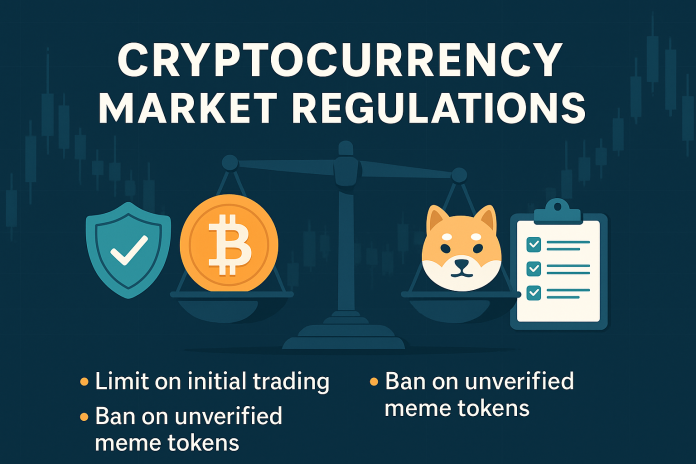
South Korea is set to overhaul its cryptocurrency regulatory framework, targeting speculative trends and reinforcing investor protection. Under the latest policy changes, the so-called “listing beam”—the phenomenon of price surges immediately after coin listings—will be curbed, and low-liquidity or unverified meme tokens will face stricter scrutiny or outright delisting.
Announced by the Virtual Asset Committee under the Financial Services Commission (FSC), the amended “Best Practices for Crypto Listings” will take effect in June 2025. These changes were prompted by controversies surrounding coins like MOVE and the Donald Trump-inspired meme token $TRUMP, both of which were listed rapidly and exhibited extreme price volatility.
Key measures include mandating a minimum liquidity threshold before any coin can be listed, and prohibiting market and reserved orders for a certain period after trading begins. This introduces a mechanism similar to the “sidecar” system in the stock market, aiming to reduce short-term price manipulation.
Meme coins, often launched with no clear issuer and driven by online trends, will now be subject to much tighter listing requirements. To qualify for listing, such tokens must either:
Have a proven community base and transaction history; or
Be traded on regulated overseas exchanges in jurisdictions under the IOSCO framework.
Additionally, the FSC will begin delisting so-called “zombie coins”—tokens with extremely low trading activity or market capitalization. Coins with an average daily turnover below 1% for two consecutive quarters or a global market cap under 4 billion KRW over 30 days will be removed from trading platforms.
Reforms also extend to the listing review process itself. Crypto exchanges must now establish more independent and transparent review panels with a minimum personnel pool, rotational terms, and documented procedures. Listing disclosures must include enhanced investor risk notifications and detailed whitepapers.
The FSC emphasized that this regulatory overhaul is a step toward a more stable and transparent virtual asset market, pledging to work with DAXA and industry stakeholders to further refine the framework and eliminate inefficient practices.






